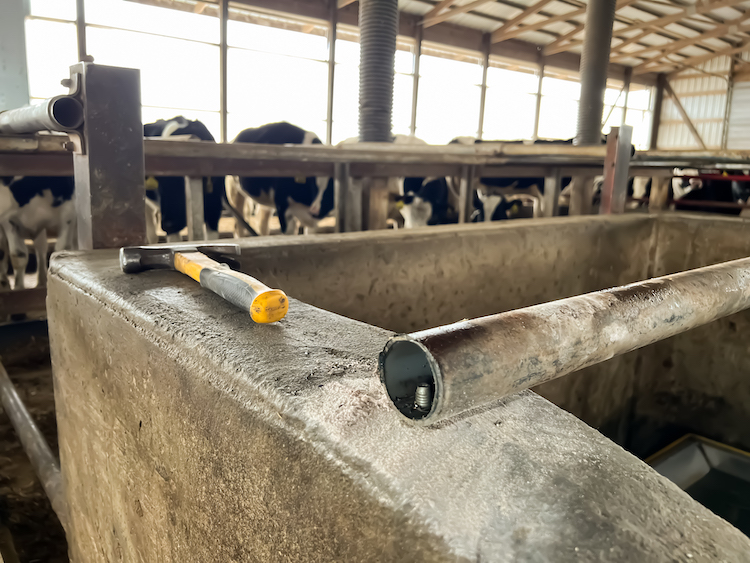
A strand of twine, an empty teat dip barrel, a lose piece of wire, a scrap of freestall neck rail, emptied mineral tubs, extra metal brackets, broken skid loader attachments, and so forth — these can all be perfect tools or materials in a dairy farmer’s brain. The "farmer fix” is the real deal. If you haven’t heard that term before, it’s basically a farmer’s ability to take a random object lying around the farm to create solutions.
Many farm spouses, kids, or even hired farmhands would probably nod along (or possibly roll their eyes) to something along the lines of, “Oh, don’t throw that — it’ll come in handy for something someday.”
I’d wager to say that every farm has some random parts, broken equipment, or scrap pieces from a different project on standby just in case it could come in handy someday. And, honestly, those farmers are usually right.
Farmers — especially those raising livestock — regularly run into an assortment of random problems throughout their day-to-day chores. Whether it’s an overhead door that’s on its last leg, a heifer that keeps standing in the waterers, or a spot in the pen that littlest calf keeps sneaking through, farmers are truly skilled at coming up with creative fixes for the task at hand.

Iowa weather in March tends to be a rollercoaster of warm and muddy days mixed with frigidly windy or snowy spurts. Since we can’t be in the fields quite yet (other than the days the ground is frozen enough to haul manure), we usually spend random days in March fixing things around the farm. In the busy times of year, some things just have to get by as is or get a quick, temporary fix. This is the time of year that we can find more permanent fixes to problems, address irritating areas and look for overall ways to improve the lives of our livestock (thus improving our own lives and giving us some sanity back).
Today, we spent a few hours fixing overhead garage doors in our heifer freestall barn. We also have had heifers standing in the waterers here and there, leading to dirty water, so we used old neck rail pieces from our milking cow freestall barn to rig up guard bars in front of them. A few other annoying issues were addressed using materials we already had laying around the property. Spending a few hours now to fix some of those irritants and get things back in proper working order will hopefully make our lives a little easier as we soon dive into our busy season of fieldwork.

The author dairy farms with her parents and brother near Hawkeye, Iowa. The family milks approximately 300 head of grade Holstein cows at Windsor Valley Dairy LLC — split half and half between a double-eight parallel milking parlor and four robotic milking units. In the spring of 2020, Molly decided to take a leap and fully embrace her love for the industry by returning full time to her family’s dairy.







